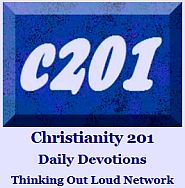One of the two churches with which I’m directly involved has a church directory which includes email addresses. The major benefit I see is that it allows people to continue the conversations started on Sundays throughout the week; to initiate contact; or to follow up with friends they haven’t seen in awhile.
The church family phone directory is probably something that will disappear over the next decade because of (a) privacy concerns, and (b) the degree to which the megachurches set the agenda of smaller churches. Nonetheless we thought we’d visit this topic.
 Since my church uses a photo directory, I had a thought today that it would be fun to do one where instead of actual photographs, people submitted an avatar, as they do on social media. It would be 100% contrary to the purpose for which photo directories were created in the first place, but definitely fun and colorful.
Since my church uses a photo directory, I had a thought today that it would be fun to do one where instead of actual photographs, people submitted an avatar, as they do on social media. It would be 100% contrary to the purpose for which photo directories were created in the first place, but definitely fun and colorful.
Full disclosure: I was looking at this picture of two cats when I came up with this, and thinking it might be better than the dated picture of Mrs. W. and myself they’ve been using for the past four years.
Next, there is the issue of people who appear in these directories who have long moved on, hopefully to another church.
Charles Haddon Spurgeon was a megachurch pastor. We often forget that numerically, he would qualify by today’s standards. The church experienced phenomenal growth. At their size, not to mention the cost of paper, a church directory would have been impossible. But there was a membership roll and people wanted their name kept on it. He wrote,
Let us not keep names on our books when they are only names. Certain of the good old people like to keep them there, and cannot bear to have them removed; but when you do not know where individuals are, nor what they are, how can you count them? They are gone to America, or Australia, or to heaven, but as far as your roll is concerned they are with you still. Is this a right thing? It may not be possible to be absolutely accurate, but let us aim at it… *
I don’t think that everyone I’m aware of actually wants their directory listing to be kept. They’ve possibly changed churches and aren’t giving it a thought. Rather, the fault lies with the church for not noticing their absence. (Having written that, I just got in touch with someone I haven’t seen lately to see how they’re doing.)
I see we’ve covered this topic before. Four years ago, I proposed something different:
How a social media hub is different from a Church directory
 I’m writing this in a vacuum, because I haven’t exactly seen done what I am proposing here. I just see a need. So here’s the proposal, and if you have any suggestions or revisions based on experience with a church that’s doing this please leave a comment.
I’m writing this in a vacuum, because I haven’t exactly seen done what I am proposing here. I just see a need. So here’s the proposal, and if you have any suggestions or revisions based on experience with a church that’s doing this please leave a comment.
Social media, as we have come to know it, is with us to stay. The platforms will migrate over time, but a generation has grown up communicating on line, and overall, I would say that for the church, this is a good thing. We can start a conversation at a weekend service, and continue it all week. We can learn that people have specific interests, and send them links to articles and channels of interest. It replaces the classic “encouragement notes” or “thinking-of-you cards.”
- Ideally, a church directory lists every member and adherent. A social media index lists only people who want to share their various social media platforms.
- A Church directory contains addresses and numbers for mobile phones and land lines. A social media index has names and locations for Twitter, Facebook, Instagram, Pinterest, tumblr, WordPress and YouTube pages.
- A Church directory often exists in print; a church social media hub exists only online. It’s live, so information may be added or removed at any time.
- Church publications generally promote the church’s own social media pages. A social media index highlights what the church family is doing online.
- Church directories are usually only distributed to the people whose names are contained in them. A social media index can just be a page on the church website — “Central Community Church on Social Media” — with no restricted access, because each of the pages concerned are public anyway.
- Knowing that anyone in your church can access your pages is a wonderful way of keeping yourself accountable for what you write, post or link to. Your social media pages may reflect a personal family focus and other interests and hobbies you have; but ultimately you are aware that fellow church members might drop in at any time, unannounced.
- Social media is constantly changing. A social media index for your church family needs to be updated on a regular basis, perhaps weekly. If a given platform falls out of use, there can be a decision to delete all links to that platform.
- If any social media platform from any church member is reported to have questionable content, all their listings would be removed.
If one of the basic problems in the church is that we don’t really know each other, I know of no other way to change that than to be interconnected online. This allows us to get to know each other to a greater degree.
We’ll look more at this topic tomorrow!
*Spurgeon quotation source, click here.













